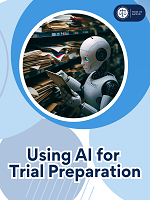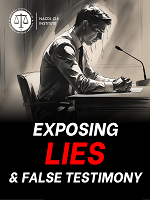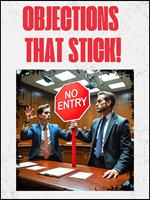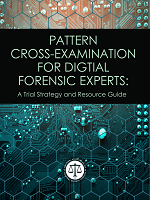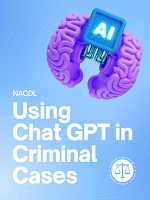Access to The Champion archive is one of many exclusive member benefits. It’s normally restricted to just NACDL members. However, this content, and others like it, is available to everyone in order to educate the public on why criminal justice reform is a necessity.
It is now conventional wisdom that eyewitness identifications can be notoriously unreliable.1 But what about identifications by witnesses who believe the perpetrator is someone familiar? Are their identifications reliable?
A. An Exemplar Case: State v. Guilbert
In 2007, a jury convicted Brady Guilbert of shooting three men in New London, Conn., two of them fatally.2 The prosecution alleged that Guilbert shot one man in a bar at around 1:00 a.m. on Oct. 9, 2004, and, then, a few blocks away and five minutes later, shot two others in the head while they sat in the front seat of a parked car. Guilbert was convicted almost entirely on the testimony of four alleged eyewitnesses. At trial, Guilbert challenged the reliability of all of the eyewitness identifications.
One witness was the man who was shot in the dimly lit bar. He initially said he did not know who shot him, later said it was Guilbert, with whom he had a previous altercation, and still later denied making any identification at all. The second witness emerged from the bar restroom after the shooting and saw the shooter only briefly. That witness came forward 10 days later, after seeing a newspaper article about the shooting that included Guilbert’s photograph.
The two other witnesses — both of whom identified Guilbert as the assailant in the car shooting — also did not come forward until after reading the news story with Guilbert’s photograph. Both of these witnesses were also cousins of one of the victims and claimed they were acquainted with Guilbert. One said Guilbert lived with her family when she was younger, and the other said Guilbert had been a regular customer at Dunkin’ Donuts when she worked there months earlier.3
Guilbert’s lawyers unsuccessfully attempted to call an expert witness to testify about factors that might affect the reliability of eyewitness identifications. In disallowing the expert testimony, the court reasoned that the reliability of eyewitness identifications — including the effect of a witness’s prior familiarity with the alleged perpetrator — was within the “common knowledge” of the members of the jury, which made expert testimony unnecessary.4
This article refutes the “common knowledge” approach. Absent expert guidance, jurors will likely be misled by their commonly held — but incorrect — beliefs and assumptions. Indeed, the Guilbert court’s core reasoning in denying the request for expert testimony — that any concerns about the reliability of eyewitness identifications are eliminated when an eyewitness is “familiar” with the identified person — is a stunning example of a commonly held but incorrect assumption. Scientifically-designed research studies have consistently shown that prior familiarity can adversely affect the reliability of an eyewitness identification in nuanced, complex, and often counterintuitive ways. In short, familiarity does not guarantee reliability.
B. Familiarity and Facial Recognition
The recognition and identification of familiar faces has been the focus of a number of scholarly studies in the fields of psychology and neuroscience.5 As a general matter, the accuracy of facial recognition and identification increases as a function of familiarity: ceteris paribus, people can recognize their own faces better than those of celebrities, the faces of celebrities better than those of acquaintances, and those of acquaintances better than those of strangers.6 Within this general framework, however, empirical findings have painted an unexpectedly intricate and less straightforward picture.
Research shows that, counterintuitively, identifications of familiar faces — as with identifications of unfamiliar faces — are influenced by a host of variables, including interaction time, contextual information, expectation, post-event information, and own-race bias. By changing how the brain perceives and processes interactions, these variables simultaneously increase the probability that an individual will identify a given face as familiar and inflate the individual’s confidence in the identification, regardless of whether the face in fact is familiar or the identification accurate.
1. Factors That Interact With Familiarity to Produce Counterintuitive Results
The most obvious and relevant difference between stranger and non-stranger identifications is pre-event exposure time: previous interaction with a person is a prerequisite for familiarity, or “non-stranger identifications,” but a negating condition for identification of strangers (i.e., if one had a previous interaction with someone, that person is “familiar” and no longer a stranger). As a matter of common sense, the more time spent interacting with a person, the more thoroughly the unique physical characteristics of that person should be encoded, thus producing more accurate recognition and identification. To a degree, this intuitive assumption is confirmed by science: increased interaction time does seem to produce marginally more accurate identifications.7
However, a larger and more counterintuitive result also stems from increased interaction time: a greater incidence of false positives — that is, a propensity of the witness to incorrectly select strangers’ photographs from lineups, whether or not the lineup contains the familiar person’s photograph.8 This counterintuitive relationship was most clearly demonstrated in a 1995 experiment that examined the effect of increased interaction time on store clerks’ ability to accurately recognize and identify a female target.9 Half of the clerks spoke with the female target for 30-60 seconds (“short-interaction” clerks); the other half were interviewed by the female target for between four and 12 minutes (“long-interaction” clerks). Two days later, all clerks were asked to pick out the targets’ photographs in various photographic lineups; some lineups contained the targets’ photos (target-present), while others did not (target-absent).10
On the whole, the most reliable effect of increased exposure to the female target was the clerks’ greater willingness to identify someone from the lineups, but their choices were wholly unrelated to increased ability to choose the correct photograph.11 For both target-present and target-absent lineups, the long-interaction clerks more often erroneously picked the photograph of a stranger as the interviewer. Moreover, the long-interaction clerks’ performance deteriorated most severely — and most disturbingly for eyewitness identification purposes — in target-absent lineups: the percentage of clerks who incorrectly said the target was present more than doubled as their interaction time with the female target increased.12 This increase in misidentifications was “entirely attributable” to the clerks’ increased propensity to select a stranger’s photograph.13
The unexpected results of this study are explained by the effect of increased exposure on the clerks’ self-perception.14 The clerks who had interacted with the target for a longer period of time were more confident that the exposure equipped them to make an identification. As a result, they more frequently chose a photograph from the lineup. Unfortunately, they were mistaken about the effect of their prior exposure to the subject. Although long-interaction clerks were able to report a greater aggregate quantity of information about the target, the absolute quantity of correct information was the same for both long- and short-interaction clerks. Simply put, increased interaction time causes people to think they remember more about a familiar person’s physical appearance than they actually do. That assumption more often leads them to conclude erroneously that a stranger who looks familiar is, in fact, the familiar person.
Whereas increased interaction time increases false-positive identifications by altering self-perception, context increases false positives through unconscious, associative distortions. In particular, subconscious expectations and the presentation of contextual information — such as information about the person’s background, personality, or the circumstances in which the person is typically encountered — serve as “priming” mechanisms that increase the identifier’s confidence to make an identification and the probability that the identification will be wrong.15
This context effect is due largely to the unique cognitive processes that underlie how one recognizes familiar faces. Neuroscientific findings suggest that the successful recognition of familiar faces involves not only visual familiarity, but also emotional responses and “person knowledge” stored in long-term memory (e.g., personal traits, biographic information, and episodic memories associated with the individual).16 Consequently, problems with any one of these streams can negatively impact familiar face recognition. Moreover, the intermingling of processing streams sometimes allows increased input from one stream to hijack the other streams, producing unexpected results.
The “availability heuristic” (cognitive reliance on a rule-of-thumb to make judgments) is an example of such hijacking. The availability heuristic causes people to assume that there is a direct relationship between how they think about an event and how the event likely occurred; the brain uses “strength of association as a basis for the judgment of frequency” without assessing actual probability.17 For example, one may judge the likelihood that a particular suspect is guilty of a crime by scanning one’s own mind for similar instances or associations, as a shortcut for assessing the actual circumstances surrounding the crime. The availability heuristic has been well-documented in other recall-based tasks.18 As applied to facial recognition, the availability heuristic predicts that “enhanced contextual information increase[s] the ease of recall of information about the target … and that this familiarity [i]s misattributed to perceptual familiarity.”19 Expectation similarly “raises the basic activation level of the face recognition unit” of the brain to enhance the ease of recall and produce the same misattribution effect.20 Thus, because information about a familiar individual’s identity is already stored in an identifier’s brain, both contextual information and expectations triggered by surroundings or circumstances associated with the familiar person “prime” the identifier’s brain to more likely misidentify a stranger as the familiar person.
2. Irrespective of Familiarity, Other Factors Also Significantly Affect The Reliability of Eyewitness Identification
Although there are unique cognitive processes that affect familiar eyewitness identifications, there also are some cognitive processes implicated in all facial recognition, regardless of familiarity.21 Both mundane and less obvious factors have been shown unexpectedly to affect the accuracy of all eyewitness identifications. These include situational factors, the typicality effect, own-race bias, and the inaccuracy of eyewitness confidence. The effects of post-event contextual information discussed below can also apply to the identification of strangers and non-strangers alike.22
For commonplace situational factors like poor viewing conditions and facial typicality, what is surprising is the magnitude of the deleterious effects. In one study, bad lighting and partially concealing the subject’s face and hair reduced correct identifications of known subjects by 18 percent.23
The “typicality effect” makes individuals more likely to misidentify a typical but unfamiliar face as familiar than to misidentify an atypical familiar face.24 This occurs because “increased typicality is associated with increased general familiarity and decreased memorability.”25 Moreover, “familiarity arising from some specific prior exposure is not intrinsically separable from the structurally induced familiarity that arises from a lifetime of experience with similar exemplars.”26
Less obvious phenomena — e.g., the own-race bias (ORB) effect (i.e., more accurate identifications of people among a witness’s own race) — may also affect both familiar and unfamiliar face recognition. The ORB effect is resilient and pronounced. It occurs across memory tasks (e.g., face recognition, face matching, and lineup identifications), is resistant to time and familiarity manipulations, and is replicable in a wide variety of experimental settings.27 In a meta-analysis of 91 studies reported in 39 research articles, ORB was found consistently to decrease correct identifications and increase false-positive identifications.28
Finally, it is now well-established that eyewitness confidence (i.e., in the accuracy of their own identification) is an unreliable predictor of actual accuracy across the board.29 This kind of confidence is different than the confidence (discussed above) that the witness will be able to make an identification at all, but similarly creates potential for error in identifications and subsequent prosecutions of suspects.
Conclusion
Empirical evidence and an array of DNA exonerations have confirmed that familiarity does not eliminate misidentification problems. Even with familiar faces, people are significantly worse at recognizing faces than they expect. Given this fact, some courts recognize the importance of cautionary expert testimony concerning the reliability of eyewitnesses.30 But, when “familiarity” is involved in an identification, courts often fail to allow expert testimony, instead clinging to the belief that eyewitness testimony “is particularly valuable where … lay witnesses are able to make the challenged identifications based on their familiarity with characteristics of the defendant. …”31 Tragically, this erroneous presumption has significantly contributed to wrongful convictions.32
Among DNA exoneration cases in which erroneous eyewitness identifications were implicated, several involved misidentifications by witnesses, other than accomplices, who were familiar or acquainted with the suspect.33 In the case of Mark Diaz Bravo, for example, the rape victim, a manic-depressive disorder patient in a Los Angeles psychiatric hospital where Bravo worked as a nurse, identified him by name as the assailant and later identified him in court.34 In addition to the eyewitness identification, Bravo previously had falsified his qualifications on applications and business cards, and had a rare blood type that matched blood found on the blanket where the rape occurred. After three years in prison, however, DNA testing on semen from the rape exonerated Bravo.
Similarly, in Alexandria, Va., a jury convicted Walter Snyder for rape and sodomy on the basis of an identification by the victim, who lived across the street from Snyder.35 The victim identified Snyder in a police station “show-up.” In addition, both Snyder and the perpetrator were type A secretors. Moreover, Snyder’s alibi was corroborated only by his mother. But after DNA testing of semen found on a vaginal swab from the original rape kit excluded Snyder, the governor of Virginia granted Snyder an absolute pardon and he was released from prison after serving seven years of his original sentence.
These and other cases apparently involved honest mistakes by eyewitnesses whose identifications jurors understandably might have assumed were reliable. As this article shows, however, such assumption may be misplaced.36 Consequently, courts should recognize this danger and permit expert testimony to assist the jury in properly assessing the reliability of all eyewitness evidence, regardless of whether the witness claimed the suspect was familiar.
The authors are greatly appreciative of the valuable assistance of Julianna Soic, a member of the 2012 Duke Law School class, who helped with an earlier related work.
Notes
- Neil Vidmar et al., Lying Eyes: Rethinking Reliance on Eyewitness Confidence, 94:1 Judicature 16 (July-Aug. 2010). The Supreme Court this Term rejected a due process challenge to the failure of a trial court to conduct a preliminary judicial inquiry into the reliability of an eyewitness identification made under unnecessarily suggestive circumstances, but without manipulation by the police. Perry v. New Hampshire, 565 U.S. __, No. 10-8974 (2012) (2012 WL 75084). The Court held that unless law enforcement is responsible for the suggestive circumstances, it is the primary responsibility of the jury, not the court, to determine whether an identification is reliable. Id. at __. “We also take account of other safeguards built into our adversary system that caution juries against placing undue weight on eyewitness testimony of questionable reliability.” Id. Those other “safeguards” include the right to cross-examine the witness; the right to effective assistance of counsel; and “eyewitness-specific jury instructions.” Id. at __-__. Justice Sotomayor was the lone dissenter.
- State v. Guilbert, S.C. 17948 (Conn. argued Feb. 10, 2011).
- Additional witnesses identified Guilbert as the shooter, but each identification may have been affected by various factors scientifically demonstrated to lead to inaccurate identification, including the effect of post-event information — such as the newspaper photograph — on the neighbors who originally described the shooter as a full foot shorter than Guilbert. All of these factors are significant and fall outside the realm of “common knowledge.”
- The majority of jurisdictions grant trial courts the discretion to disallow expert testimony on the reliability of eyewitness identifications. See, e.g., United States v. Rodriguez–Berrios, 573 F.3d 55, 71-72 (1st Cir. 2006); United States v. Brownlee, 454 F.3d 131, 141-44 (3d Cir. 2006); State v. Copeland, 226 S.W.3d 287, 298-300 (Tenn. 2007). Others may require or favor the admission of such testimony when the prosecutor’s case relies solely on eyewitness identification. See, e.g., United States v. Smithers, 212 F.3d 306, 317 (6th Cir. 2000); People v. Jones, 70 P.3d 359, 374-75 (Cal. 2003); State v. Wright, 206 P.3d 856, 861-64 (Idaho 2009); People v. LeGrand, 867 N.E.2d 374, 375-76 (N.Y. 2007). Three jurisdictions disallow such testimony per se. See, e.g., United States v. Smith, 122 F.3d 1355, 1357-59 (11th Cir. 1997); State v. Goldsby, 650 P.2d 952, 953-54 (Or. 1982); Commonwealth v. Simmons, 662 A.2d 621, 630-31 (Pa. 1995).
However, under some circumstances, the familiarity of an eyewitness with a suspect may be a bar to the defendant challenging an identification on the ground of honest mistake. “There may be cases in which the parties are so well known to each other or so closely related that under sufficient lighting and with appropriate physical proximity, the identification by the victim is either true or the victim is lying.” Commonwealth v. Pressley, 398 Mass. 617, 619; 457 N.E. 2d 1119, 1121 (1983); see, e.g., Commonwealth v. Grace, 43 Mass. App. Ct. 905; 681 N.E. 2d 1265, 1268 (1997) (defendant did not offer an alibi and eyewitness knew him “well enough to recognize him under the circumstances.”). Factors that may entitle a defendant to an honest mistake instruction relating to an eyewitness who is familiar with the suspect are a credible alibi and the absence of any other evidence corroborating the identification. SeePressley, 457 N.E. 2d 1119 (1983); see also Commonwealth v. Williams,54 Mass. App. Ct. 236; 754 N.E. 2d 889 (2002). - See, e.g., Nancy Kanwisher & Morris Moscovitch, The Cognitive Neuropsychology of Face Processing 1, 3-4 (2000); B. Rossion et al., Task Modulation of Brain Activity Related to Familiar and Unfamiliar Face Processing, 110 Clinical Neurophysiology 449, 449 (1999).
- See, e.g., Stephan M. Collishaw & Graham J. Hole, Featural and Configurational Processes in the Recognition of Faces of Different Familiarity, 29 Perception 893, 900-01 (2000); P.N. Shapiro & S. Penrod, Meta-analysis of Facial Identification Studies, 100 Psychol. Bull.139, 139-56 (1986).
- See J. Don Read, The Availability Heuristic in Person Identification: The Sometimes Misleading Consequences of Enhanced Contextual Information, 9 Applied Cognitive Psychol. 91, 97 (1995) (determining that test subjects’ slight increase in correct identification due to increased familiarity was statistically insignificant).
- See id. at 98; see also José H. Kerstholt et al., The Effect of Availability on the Identification of Known and Unknown Persons, 6 Applied Cognitive Psychol. 173, 179-80 (1992); J. Don Read et al., Changing Photos of Faces: Effects of Exposure Duration and Photo Similarity on Recognition and the Accuracy-Confidence Relationship, 16 J. Experimental Psychol.: Learning, Memory, and Cognition 870, 875 (1990).
- Read, The Availability Heuristic, supra note 7, at 94-100.
- Id. at 95-96. A total of 112 store clerks participated in the study. In the “short-interaction” (30- to 60-second) scenario, the clerks were first approached by a research assistant (RA1) posing as a mother who was looking for her daughter, whom RA1 was supposed to meet at the store. RA1 provided an accurate description of the daughter and her clothes, and asked whether the daughter had been in the store. About 15 minutes later, a second research assistant (RA2), posing as the daughter, entered the store and asked the clerks if her mother had been in the store. RA2 (the target, whom the clerks would be asked to identify 48 hours later) spent about 30-60 seconds in the store.
- In the “long-interaction” four- to 12-minute scenario, the female target interviewed the clerks as part of a fake research project on eyewitness testimony and asked the clerks questions about the identity of a male customer (another researcher) who had come into the store two days earlier. The clerks were unaware that the actual experiment involved identifying the female researcher 48 hours later.
- Id. at 97-99.
- Id. Whereas only 63.3 percent incorrectly said the target was present after the short interaction, 88.4 percent answered incorrectly after the longer interaction. Id. at 97.
- Id. at 99.
- Id.; cf. Kerstholt et al., supra note 8, at 180 (suggesting that reduced accuracy also may be due to a combination of increased exposure time and poor viewing conditions).
- See Kerstholt et al., supra noteeight, at 173-78 (witnesses’s expectation of seeing a known person led to an 8 percent increase in false-positive identifications); Read, The Availability Heuristic, supra note 7, at 115 (presenting subjects with additional contextual information about a familiar target made them twice as likely to choose false positives in high-similarity lineups); accord Andrew W. Young et al., The Faces That Launched a Thousand Slips: Everyday Difficulties and Errors in Recognizing People, 76 Brit. J. Psychol. 495, 505 (1985) (subjects self-reported being more likely to identify strangers as familiar when they were expecting a familiar person).
- See M. Ida Gobbini & James V. Haxby, Neural Systems for Recognition of Familiar Faces, 45 Neuropsychologia 32, 32-33 (2007); see also Kerstholt et al., supra note8, at 173 (“[F]or a successful identification [of a familiar face] to occur more specific information is needed such as where the person lives, his or her occupation and where he or she is usually encountered.”); Tversky & D. Kahneman, Availability: A Heuristic for Judging Frequency and Probability, 5 Cognitive Psychol. 207, 207-09 (1973).
- Read, The Availability Heuristic, supra note 7, at 93; see C.M. Kelley & D.S. Lindsay, Remembering Mistaken for Knowing: Ease of Retrieval as a Basis for Confidence in Answers to General Knowledge Questions, 32 J. Memory & Language 1, 1-24 (1993); Tversky & Kahneman, Availability: A Heuristic for Judging Frequency and Probability, supra, at 207-32.
- Read, The Availability Heuristic, supra note 7, at 103.
- Kerstholt et al., supra note8, at 179 (citing V. Bruce & A. Young, Understanding Face Recognition, 77 Brit. J. Psychol. 305-27 (1986)).
- See, e.g., J. Kirkland Reynolds & Kathy Pezdek, Face Recognition Memory: The Effects of Duration and Encoding Instruction, 6 Applied Cognitive Psychol. 279, 289-91 (1992).
- See, e.g., Kathy Pezdek & Stacia Stolzenberg, Non-Stranger Identification: How Accurately Do Eyewitnesses Determine if a Person is Familiar? 13 (Sept. 29, 2010) (unpublished manuscript, on file with authors of this article) (a study of the ORB effect found “recognition accuracy for casually familiar non-strangers is not reliably higher than that for strangers”).
- Kerstholt et al., supra note 8, at 178-79.
- See, e.g., John R. Vokey & J. Don Read, Typicality, Familiarity, and the Recognition of Male and Female Faces, 42 Can. J. Psychol. 489, 493 (1988); James C. Bartlett et al., Typicality and Familiarity of Faces, 12 Memory & Cognition 219, 219 (1984).
- John R. Vokey & J. Don Read, Familiarity, Memorability, and the Effect of Typicality on the Recognition of Faces, 20 Memory & Cognition 291, 294 (1992).
- Id. at 300.
- Christian A. Meissner & John C. Brigham, Thirty Years of Investigating the Own-Race Bias in Memory for Faces, 7 Psychol., Pub. Pol’y & L. 3, 4-6 (2001).
- Id. at 15.
- E.g., Amina Memon et al., Exposure Duration: Effects on Eyewitness Accuracy and Confidence, 94 Brit. J. Psychol. 339, 349 (2003); Pezdek & Stolzenberg, supra note 22, at 13; Read, The Availability Heuristic, supra note 8, at 114-15.
- See, e.g., People v. Legrand, 867 N.E.2d 374, 379 (N.Y. 2007). (“There are cases in which it would be an abuse of a court’s discretion to exclude expert testimony on the reliability of eyewitness identifications.”).
- United States v. Langford, 802 F.2d 1176, 1179 (9th Cir. 1986); accord United States v. Beck, 418 F.3d 1008, 1015 (9th Cir. 2005); United States v. Jackman, 48 F.3d 1, 4-5 (1st Cir. 1991); United States v. Jackson, 688 F.2d 1121, 1125 (7th Cir. 1982).
- DNA exonerations have occurred in numerous cases in which the defendant was erroneously identified by an eyewitness who had prior experience with him. See Innocence Project Case Profiles, Innocence Project, http://www.innocenceproject.org/know/ (last visited Nov. 21, 2010) (e.g., Mark Bravo, Danny Brown, Charles Dabbs, and Clarence Elkins; identified by information in case profiles).
- In a study of 86 cases of capital defendants who were exonerated by DNA, the Center on Wrongful Convictions found that eyewitness testimony played a role in 46 of the cases. Rob Warden, How Mistaken and Perjured Eyewitness Identification Testimony Put 86 Innocent Americans on Death Row, Remarks at Andrews University (May 2, 2001), available at http://www.deathpenaltyinfo.org/StudyCWC2001.pdf. Of those 46 cases, 19 involved eyewitnesses who were strangers and 9 involved non-accomplice acquaintances; however, some of the non-accomplice acquaintances appeared to have been motivated by a grudge. Id. Non-accomplice acquaintances were also found among the eyewitnesses who misidentified innocent individuals in Brandon Garrett’s more comprehensive study of DNA exonerations. See Brandon L. Garrett, Convicting the Innocent: Where Criminal Prosecutions Go Wrong, at Appendix: Characteristics of Eyewitness Misidentifications in DNA Exonerees’ Trials (2011).
- U.S. Dep’t of Justice, Convicted By Juries, Exonerated By Science: Case Studies in the Use of DNA Evidence to Establish Innocence After Trial, at Chapter IV, “Profiles of DNA Exculpatory Cases,” 37-38 (1996), available at https://www.ncjrs.gov/pdffiles/dnaevid.pdf.
- Id. at 71-72.
- Nevertheless, some courts misguidedly make the same assumption as a matter of law. See supra note 4.




